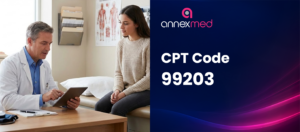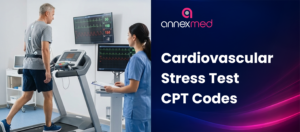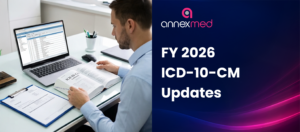Clinical laboratory billing succeeds when codes reflect what was ordered, performed, and reported, no more, no less. This blog provides a clear, professional walkthrough of high‑utilization laboratory CPT codes and the documentation habits that prevent denials.
The Scope is limited to clinical laboratory services. Anatomic pathology and cytology are covered separately.
Table of Contents
Five decision points that determine payment accuracy
1) Panel vs. individual analytes – Bill a panel only when all required components are performed and reported on the same date of service. Otherwise, code individual analytes. Example: 80053 (CMP) should not be billed if any listed component is missing.
2) Method alignment – Urinalysis codes depend on method and microscopy: 81002 (manual, no microscopy), 81003 (automated, no microscopy), 81001 (with microscopy). Select the code that matches the method actually used.
3) Medically necessary repeats – When repeating the same test on the same day to obtain a new clinical result (e.g., serial troponins or lactate), append ‑91 to the repeated test and document the reason. Do not use ‑91 for QC/instrument issues.
4) CLIA and QW compliance – For CLIA‑waived tests, ensure the performing site holds an appropriate certificate and append QW when required. This is essential for rapid antigen tests (e.g., 87880, 87804, 87811).
5) Molecular and PLA selection – If a proprietary or single‑laboratory assay exists, a corresponding PLA U‑code generally applies; use the PLA code instead of a generic 812xx–814xx code. Review quarterly updates.
Practical scenarios
Scenario A — Broken panel definition – A basic metabolic panel (80048) is ordered; an additional analyte outside the BMP definition is added later. Billing the panel will deny. Use individual analytes when the panel definition is not met.
Scenario B — UA code mismatch – A site transitions to automated urinalysis but continues to bill 81002. Align coding to 81003 (automated, no microscopy) or 81001 (with microscopy) based on actual performance.
Scenario C — Serial cardiac enzymes – Troponin (84484) at 0h, 1h, 3h for rule‑out. Append ‑91 to the repeat tests and document protocol‑based necessity in the record.
High‑utilization codes and usage notes
Panels
- 80048 Basic Metabolic Panel — bill only when all BMP components are performed with the same DOS.
- 80053 Comprehensive Metabolic Panel — confirm that every component is present.
- 80061 Lipid Panel — observe frequency and screening vs. diagnostic indications.
- 80076 Hepatic Function Panel — all listed analytes must be performed.
Chemistry / Endocrine
- 83036 Hemoglobin A1c — diagnosis/monitoring; document necessity if outside routine intervals.
- 84443 TSH; 84439 Free T4; 84481 Free T3 — apply when clinically indicated.
- 82947 Glucose (quantitative), 82565 Creatinine, 82310 Calcium, 83735 Magnesium, 84100 Phosphorus, 82040 Albumin.
- 84460 ALT, 84450 AST, 84075 ALP, 82247 Bilirubin total (pair 82248 direct as appropriate).
- 83690 Lipase (preferred over 82150 amylase in many protocols), 83605 Lactate (consider ‑91 for protocol‑driven repeats).
- 82306 Vitamin D, 82607 B12, 82728 Ferritin, 83540/83550 Iron/TIBC, 86140/86141 CRP/hs‑CRP, 84484 Troponin, 83880 BNP/NT‑proBNP per methodology.
Hematology / Coagulation
- 85025 CBC with automated differential; 85027 CBC without differential.
- 85610 PT/INR; 85730 PTT; 85379 D‑dimer; 85384 Fibrinogen; 85732 Thrombin time.
- 85045 Reticulocyte count; 85652 ESR.
Urinalysis & Kidney
- 81002 / 81003 / 81001 — match code to method and microscopy.
- 82043 Urine microalbumin (quantitative) with 82570 urine creatinine when calculating ACR per payer rules.
- 81025 Urine pregnancy test (visual color comparison).
Arterial/Venous Blood Gases
- 82803 Blood gases (pH, pCO₂, pO₂ ± O₂ sat) — document indication; consider ‑91 when clinically necessary repeats occur same DOS.
Microbiology — Cultures & Rapid Antigen
- 87040 Blood culture (aerobic); 87086 Urine culture (quantitative); 87088 Additional isolate (urine).
- 87186 Antimicrobial susceptibility (microdilution/automated).
- 87880 Strep A antigen; 87804 Influenza antigen; 87811 SARS‑CoV‑2 antigen (ensure CLIA/QW compliance).
Infectious Disease — Serology & NAAT
- 86803 HCV antibody; 87340 HBsAg; 87389 HIV‑1/2 Ag/Ab (4th gen).
- 87635 SARS‑CoV‑2 NAAT (PCR); 87491 C. trachomatis NAAT; 87591 N. gonorrhoeae NAAT; 87493 C. difficile NAAT; 87624 High‑risk HPV DNA.
Toxicology
- Presumptive immunoassays (8030X/8032X/8035X families) vs. definitive mass‑spec (8036X–8037X). Establish reflex criteria and frequency controls.
- Molecular / Genetics
- Category I molecular (812xx–814xx) including 81445 solid tumor (5–50 genes) and 81450/81455 hematolymphoid panels.
- PLA U‑codes for proprietary/single‑lab assays; review quarterly updates.
- Transfusion Medicine / Immunohematology (include only if applicable)
- 86900 ABO typing; 86901 Rh(D); 86850 Antibody screen.
Modifiers commonly used in laboratory billing
- 91 Repeat clinical diagnostic laboratory test — same test, same day, new result; not for QC or instrument issues.
- 90 Reference (outside) laboratory — your entity bills for a test performed by another lab, when payer policy permits; include performing lab details if required.
- 59 Distinct procedural service — use only when services are distinct by criteria and no more specific modifier exists.
Documentation standards that reduce denials
- Order clarity: Panel vs. individual analytes, and a concise clinical reason.
- Specimen and method: Source and method (e.g., manual vs. automated UA; antigen vs. NAAT) consistent with the billed code.
- Panel integrity: Document that all components were performed when billing a panel.
- Repeat rationale: One line explaining protocol‑based or clinical need when ‑91 is used.
- CLIA/QW: Confirm the site’s certificate and add QW as required.
- Frequency and necessity: Align with MAC/payer coverage policies for common tests.
Common edit pitfalls
- Unbundling panels: Avoid billing panel components separately unless a single component was repeated and medically necessary; append ‑91 to that component.
- UA miscoding: Defaulting to 81002 when automated methods or microscopy were used.
- POCT at non‑credentialed sites: Perform rapid tests only at locations with appropriate CLIA certification.
Staying current with minimal effort
- Review the CLFS quarterly for rate/QW updates and new mappings.
- Monitor MAC and payer bulletins (LCD/LCA) for frequency and diagnosis changes.
- Update PLA mappings quarterly as new U‑codes are released.
Share a short internal “what changed” note to align clinicians, coders, and billing.
FAQS
Usually no. Venipuncture/collection (e.g., 36415/99000) is commonly billed by the clinic or drawing site, not the performing lab. Confirm payer rules and your service model (in-house vs. reference lab)
Publish clear reflex criteria (e.g., “If TSH abnormal, reflex to Free T4”) and retain protocol approvals. On the claim, report only tests actually performed; document the reflex trigger in the result or comment field.
Tie standing orders to diagnosis-specific protocols with start/stop dates, frequency, and clinician attestation. Add a prompt in the LIS/EHR that reconfirms necessity at each draw.
If the repeat draw is solely due to collection/handling issues, many payers consider the replacement test non‑billable to the plan. Record the reason for rejection and follow payer policy on patient liability before charging.
Use -90 when your entity is billing for a test performed by another lab and payer policy permits it. Include the performing lab’s details when required; some payers prefer the performing lab to bill directly.
Maintain payer‑specific frequency and diagnosis tables. Require a brief indication in the order (deficiency monitoring, therapy adjustment, risk factors) to support coverage beyond routine screening limits.
Make Lab Claims Predictable
Professional laboratory billing is about consistent application of a few high‑impact rules: correct panel usage, method‑aligned coding, appropriate repeat modifiers, and CLIA/QW compliance. Get the best for your organization with AnnexMed’s billing services.




























